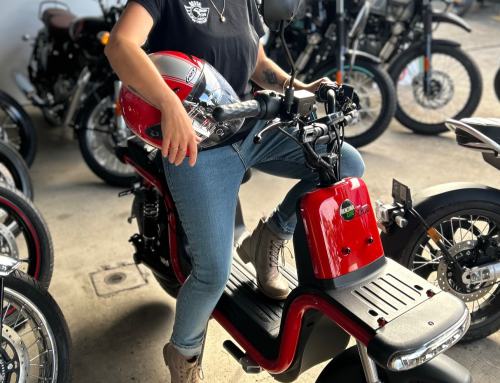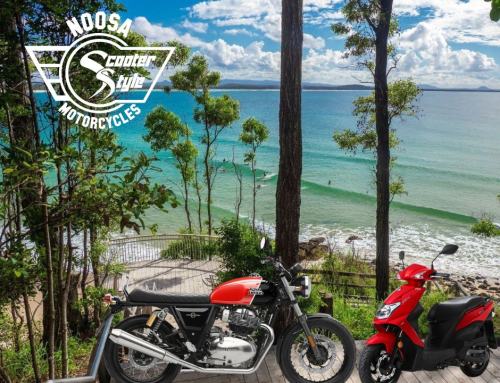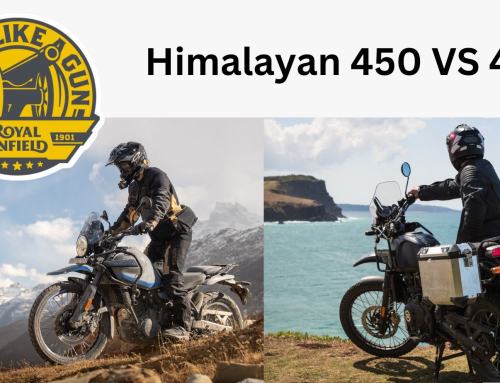Some really great tips here on motorcycle helmet fitment from RevZilla… remember a helmet only does the job its intended to do if it fits properly!
All information below is direct from the Motorcycle Helmet Fitment 101 post on RevZilla.com.
How do you know if your motorcycle helmet fits right?
As simple as it may seem, determining the proper fit can be a challenge. This guide will you make sure you get it right. This is not a guide to selecting a helmet, or an explanation on how helmets work. The goal here is to remove the mystery from fitting your helmet and to provide instructions for determining the safest possible helmet fit without any sugar coating.
Correct helmet fitment is based on science and is backed by DOT safety standards. It does not depend on what type of motorcycle you own, how you ride or how many years you have been riding.
Why helmet fit matters
Before we get into fitting your lid, let’s consider why correct fitment is important. Your helmet is first and foremost a safety device. In fact, it is one of the most tightly regulated safety devices related to your motorcycle. DOT FMVSS 218 outlines requirements for helmet retention (staying on your head), helmet penetration (stopping things from going through your head), and helmet impact protection (absorbing energy so you don’t get brain damage). All good stuff, right?
Now here’s the kicker: The DOT also regulates helmet size and it makes clear in FMVSS 218 that the above testing is only valid for a properly sized helmet. You read that correctly. If your helmet is out of the size range for your matching headform, all bets are off. Just like an airbag in a car can save the life of an adult passenger, but can be deadly to a small child riding in the front seat, your helmet can only work if it fits properly.
In addition to safety, many of the features designed into your helmet are based around a specific helmet size. Venting, sound insulation and even your viewport design are all based on the expectation that certain parts of your head and face will be in certain places. If the fit is off, you may be disappointed with your helmet.
Steps for fitting a new helmet
So how do we determine a proper helmet fit? Below are the rules for fitting your lid. These rules are geared towards full-face helmets, but the principles can be applied to modular and open-face helmets, as well.
- Start by measuring your head and then select the corresponding helmet size from the manufacturer’s size chart. These sizes are based on DOT-regulated headforms and are the best place to start when fitting your lid.
- A new helmet should be snug around any part of your head that would be covered by a baseball cap. This area should be about as firm as a tight knitted winter hat — slightly compressed, but not painful or squeezing.
- There should be no “hot spots” or specific points in the baseball cap area where you feel pressure or pinching. This includes the forehead, back of the head and temples.
- In a new helmet, the sides of your face should be tightly compressed, particularly around your cheeks. The pressure may feel awkward or slightly uncomfortable, but should not be painful. You should not be able to chew gum, and you may not be able to speak clearly.
That is it. If your new helmet meets all of the above rules, your helmet fits you. Simple, isn’t it? If it fails any of these tests, it may be because the helmet is the wrong size or it may be the wrong shape for your head. In RevZilla videos, or if you call a Gear Geek for advice, you may hear us talk about helmets that are round, intermediate oval or long oval. What do those terms mean? How do you know which one is right for you?
Comparing your head’s length from front to back and width from side to side will categorize you into one of those three common head shapes. If your head is mostly circular, and your ears are as wide apart as your head is long, you have a round head shape. If your head is slightly longer than it is wide, and your ears somewhat closer together, you have an intermediate oval head shape. If your ears are narrowly placed, and your head is much longer from the forehead to the crown, you have a long oval head shape. To determine your head shape, take a photo from the top down (long hair should be pulled tight so you can best see your bone structure).
With that in mind, here’s what to do if the helmet you’re trying on fails one of the fit tests above:
- If your helmet is not snug around that baseball cap area, the shell and EPS liner are too big for you. You are a candidate for a smaller helmet. If the helmet is squeezing tightly enough to cause you pain in an even distribution around the baseball cap area, the shell and EPS liner are too small. It’s time to go up one size.
- If your helmet is causing pain or pressure that is focused on your forehead, the helmet shape is too round for you. Look for a helmet with a narrower head shape, either intermediate or long oval. If the pain or pressure is in your temples or the sides of your head, or if you feel “pinching” in the back of your skull, this helmet shape is too narrow for you. Find a lid with a rounder head shape.
- If your cheeks are not compressed at all (but the helmet passes the first two tests), you will need to order thicker replacement cheek pads. If your cheeks are compressed to the point that you are in pain, remove the pads and squish them under something heavy over several nights. This will compress the pad batting and speed up the break-in process. As a last resort, you can usually order thinner cheek pads, but make sure you have tried and failed to break them in before you do this.
While we are at it, here are a couple of things you should never do:
- Never size up to compensate for a helmet that is the wrong shape. If you have specific hot spots or pressure points, the only safe solution is to look at a different lid.
- Never size up to add room in the cheeks. Try compressing the pads, and if that doesn’t work, purchase thinner cheek pads.
The football test
When I hear an excuse about why a helmet doesn’t fit right, I evaluate it by applying a method I call the football test. This may not work for you, depending on your personal high school experiences, but I find it useful.
foot·ball test (fo?ot‘bôl’ test) A method of determining if your requirements for a helmet fit are reasonable, or if you are outside of the scope of what is important in fitting a helmet for safety. To perform the test:
- I state the reason the helmet allegedly does not fit. “My helmet does not fit because I cannot chew gum with it on.”
- I add “coach,” to the beginning of the sentence, and “football” before “helmet.” “Coach, my football helmet does not fit because I cannot chew gum with it on.”
- I then imagine repeating this sentence to my high school football coach. If doing so would likely result in me being told to run laps, the requirement is probably not a valid concern in fitting a motorcycle helmet.
Like football, motorcycling is a sport! No matter if you ride a Suzuki GSX-R1000 or a Harley-Davidson Road King, you are engaged in a physically demanding (and potentially dangerous) activity. Your helmet is athletic equipment, so keep that in mind when fitting a lid.
Common misconceptions when fitting a helmet
I need a bigger helmet to fit my glasses. No, you need glasses that fit your helmet. A helmet is responsible for protecting everything above your neck, where glasses just need to dangle lenses in front of your eyes. It is much harder to fit a helmet properly than to fit a pair of spectacles for use inside a helmet, and it is totally reasonable to buy cheap frames with straight arms specifically for motorcycling. If you have contacts, consider wearing them instead.
I need a bigger helmet to fit my pony tail. Put your hair down. Engineers do not design impact layers with a fist-sized ball of hair in the mix, so get it out of there.
I need more cheek room so I can smoke/eat/drink with the helmet on.Particularly popular among users of modular helmets, this is also a ridiculous requirement. Sacrificing on-road safety and comfort to save a few seconds at a rest stop is like wearing scuba flippers during your entire vacation so you will not have to change shoes before you dive.
This helmet doesn’t fit because it pulls down my ears. Ever watch a little kid “try” to put on an outfit he doesn’t really want to wear? The scene that accompanies this helmet fitment concern is usually very similar. Modern helmets taper at the bottom, helping to create a better seal around your head. This results in a quieter, more secure fit. Since your head is bigger than your neck, the helmet will need to flex in order to slide around your melon. Grab each of the helmet straps and pull them out as you slide the helmet on. It will be a tight fit, and that is good. The harder a helmet is to get on, the less likely it will be to shift in a crash. If you have giant ears, you may need to practice a little to get the helmet on without folding them. You may also need to reach in and smooth out the fit on each side. To put it bluntly, you might need to make a little effort to get the helmet on. You might ask why you should not size up and make it easier to put the helmet on; well, most people do not crash while putting on their helmet, so it is probably a good idea to size your helmet for riding.
I really like the graphic/color/price of this helmet, so I will size up/down and change out comfort liners. If a helmet is the wrong shell size, EPS size or shape for your head, swapping out comfort liners is not a solution. Comfort liners are for comfort, not protection, and they will not save your brain in a crash. Regardless of the great deal you are getting or the cool paint job, fitment should be your first priority.
This helmet is too tight because it makes my head sweat. Motorcycling exposes you to the elements and requires physical exertion. This will often result in perspiration. Wearing a larger lid will not make your head sweat less. A properly fitted helmet will allow the air channels and exhaust vents to work as designed, while a larger helmet may actually disrupt the venting patterns and reduce your air flow.
I always wear a Large helmet, so I can’t be a Medium. It is a good idea to start fresh every time you size a new helmet. Your previous helmet may have been the wrong size, or the two helmets may be sized differently.
I need a bigger helmet because my chin touches the chin bar. This almost makes sense, but touching the chin bar does not necessarily mean you need a bigger lid. The chin bar is designed (and tested) to withstand serious impact force without transferring that energy to your face. Even though it is a perfectly safe fit, many riders are put off by contact with the chin bar. If it bothers you, choose a helmet with more space up front.
The salesperson at the store told me this helmet fits. In a perfect world, the person behind the helmet counter would be well trained and have your best interests at heart. Sadly, this is not always the case. Many motorcycle shops start the least experienced salespeople in helmets, and then graduate them to the hard parts counter. Training, if any, varies widely. Also, for a salesman on commission, time is money, and selling an oversized helmet is much faster than taking the time to educate a customer. It is no surprise that many helmet counters only stock helmets in size Medium and up.
I can’t be a size (Small, Medium, Large) because I’m (gives height and weight). Your helmet size has nothing to do with your torso measurements. You can be six feet, five inches tall, weigh 240 pounds and need a size Small helmet. You can be four feet, nine inches tall, weigh 96 pounds and need an XL lid. Husbands can have smaller heads than wives, children can have larger heads than parents. The only measurement that matters is the circumference of your head.
This helmet doesn’t fit because I can feel it when I smack my head into things. Helmets don’t prevent you from feeling pain from an impact. They prevent your brain from being damaged, so you are still able to complain about the helmet fit afterwards without drooling all over yourself. The bad news is that helmets are one-and-done items, and by smashing your head into things you have used up your lid.
I like a little room in my helmets. Unfortunately, physics does not care what you like. If you choose to wear a helmet that does not fit you properly, the helmet will not do its job in an impact. More energy will be transferred to your brain and you will pay the price.
My old helmet was much more comfortable than this new helmet, so I must need a bigger size. You probably don’t remember, but your old helmet started much tighter that it is now. The side and cheek comfort liners of a helmet can compress as much as 20 percent over time. Follow the rules for fitment and give it a chance to break in.
I’m not a racer, so I don’t need a helmet to fit that snug. Physics does not care what bike you ride, or how you ride it. Let’s say you are walking down the street when suddenly your legs and arms give out. If you hit your head on a curb as you fall, the force of the five-foot drop would most likely kill you (or at least severely damage your brain). If you fall at 10 mph and hit your head with no helmet or an ill-fitting helmet, it won’t matter whether you’re riding a superbike, a 50 cc scooter or a bicycle. The impact to your skull is the same.
I’m a passenger, so it’s OK if my helmet is a little loose. See the “I’m not a racer” argument above. The road does not care what seat you are in. It will hurt you all the same.
I’m an old guy. I don’t need an uncomfortable, snug helmet. Also see the “I’m not a racer” argument above. The road won’t go easy on you because you’re an AARP member. Sometimes, older riders will argue that they have survived scrapes before without proper safety gear. This is a lot like arguing that Russian roulette is safe because you’ve pulled the trigger several times without consequence.
This helmet is the wrong size because my cousin says so. Unless your cousin works at the SNELL Foundation, the “helmet expert” in your circle may not be an expert. Ask where he or she learned how to fit a helmet.
I want a helmet for my child that he or she can grow into. Helmets must fit to be safe, and unfortunately that means buying and re-buying helmets until your child stops growing. Motorcycling is a great sport that teaches children confidence and commitment, but it is not inexpensive.
As long as I have a helmet on, it is better than nothing. In a crash, the difference in energy transfer between a properly and improperly fitted helmet might be the difference between a headache and a feeding tube. Sure, any helmet will be more protective than a naked head, but that isn’t saying much. Trusting your cognitive function to “better than nothing” is as smart as it sounds.
So there you have it. I hope this guide answers some questions, and inspires you to get the best possible fitment on your next helmet.
For more information, checkout out www.RevZilla.com











